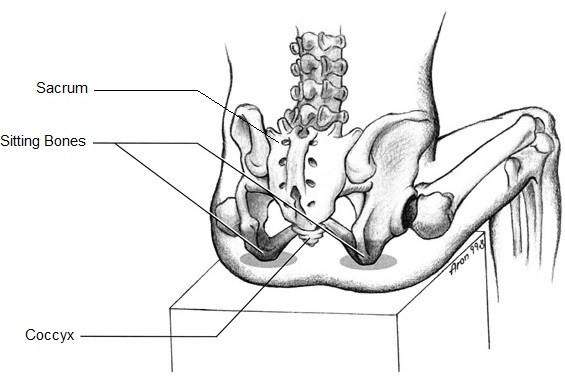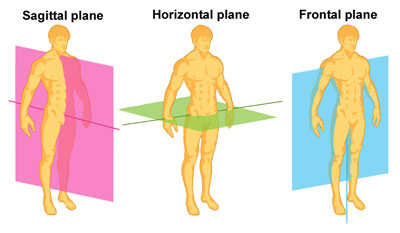Easier Sitting Workshop Lesson 1
For Part 2 of the workshop, click here.
Chair-seated, with a middle portion in back-lying. Identifying the sitbones and enriching your awareness of them, then developing the relationships between the head, sitbones, and spine as they relate to plumb (the line of gravity through the vertical skeleton). Introduces the classic Feldenkrais pelvic clock image as a way to refine and expand dynamic support possibilities for the sitbones, pelvis, and whole self.
Got a question for Nick, or a thought about this lesson?
Use the comments section below! Public comments build our community and help search engines find us.







I have been using some of your lessons for months now. Thank you. I am a freelance artist, and after my next job I will thank you by donating. Keep up the good work.
Thanks! I’m grateful for your interest and I’ll value your future contributions when they become possible. I like to say listener support is just like the movement instructions in a lesson: participate financially within your comfort, and not so much that it’s a strain!
for constantly tight right SCM muscle during computer work and driving, which is the best lesson to focus on
Hard to say from a distance, but generally speaking gently folding into the tightness, as if creating slack and then moving comfortably within that slack, is better for learning to let go of tension than stretching against it. Have you worked through our Getting Oriented series? Several of them come to mind. You can read the descriptions and follow your instincts, or work through from the beginning. It’s a wide “survey course” of short lessons, so you can learn what kind of lessons help you the most.
Hi Nick,
I’m in the UK and I really enjoyed your lesson about sitting and sit bones. I also listened to your tripod lesson. Brilliant! and very helpful. Wonderful project! Thank you so much
Thank you Nick for another superb lesson. I recently came across your work on the Feldenkrais Summit. I’m 71 and discovered Feldenkrais a couple of years ago probably at a time in my life when I most needed it, physically and emotionally. I love your teaching style, your pace, your sense of humour and your clear guidance and sensitivity. I have huge respect for the fact that through the Feldenkrais Project you are making Feldenkrais available to a wider audience. Thank you. ?
Thanks, Hilary! I’m glad you’re exploring our lessons and that you totally “get it” about our intentions with the method! Enjoy your studies, and please help us pursue our vision: share our free resources as widely as you can!
Wow so much to say cause such a long lesson lol
The first thing that surprised me was after sitting on my left hand with the sit bone and doing the mortar pestle thing, after I removed my hand I literally felt like my left side sank into the seat further and I felt lopsided.
I assume my left buttock was chronically tensed and sensing the sit bone allowed it to relax.
Sensing the other sit bone normalized both sides.
I found some movements causes me to spontaneously rhythmically shake my knee up and down on the ball of my foot, so when that happened I just return to home position gently, pause recording and wait for shaking to gently ebb to the point I feel I can stop and continue.
I had way less range of movement tilting head to the left ear versus the right, I sense like there is something stuck in left rip cage lol but the range improved somewhat.
I find that it’s easier to make a smaller lighter slower movement once you feel pleasant with an inner smile and when you got the “groove” going a bit.
Otherwise it’s easy to get pent up and too serious.
I found it was easy to keep the head in the center when moving only up down or left right but when I moved in an arc I almost didn’t notice that I began moving my head penguin mode, I had to slow down to remain gentle while keeping the head in center.
I definitely notice that the biggest issue for me is the arching of lower back, I feel like no matter how gentle I go there’s a sense of like molasses in my lower back resisting the arch and my lower abdomen might be chronically contracted a bit, and the tendons between the groin and thighs seem to remain kinda tight when arching.
I think that’s what causes me the biggest problems with sitting, cause no matter how high I set the chair so my hips are noticeably over the knees, it’s easy to slouch and shifting my pelvis forward to arch and for head to lift feels like something is too tight and the pelvic area stiffens up.
But this lesson really helped me experience the whole area pretty good, thanks nick gonna keep doing these for sure.
I’ve even felt my left shoulder which chronically clicks start to sink left and forwards so that in the end I felt the distance between left and right shoulders weirdly larger than normal, but it felt right and relaxed too so I think my left shoulder was sliding into a healthier place.
I have a very hard, if not impossible, time pressing with the left foot to raise the left sit bone. Any lesson recommendations for that?
In this one, how does it feel if you press the left foot and raise the left sit bone (make complementary movements instead of causal relationship)? Can you make a useful, harmonious whole out of doing them together? After playing with that, if you let the foot push back into the “driver’s seat” is it easier?
One hunch I have about a lesson that may be useful is Side-Bending with Listening Hands, Connecting Legs and Head (since you’re a Patron).